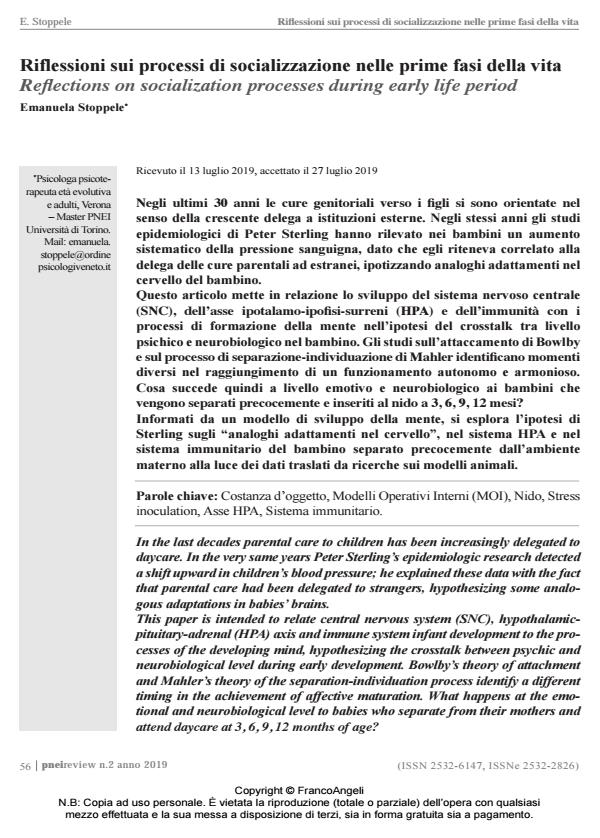Reflections on socialization processes during early life period
Journal title PNEI REVIEW
Author/s Emanuela Stoppele
Publishing Year 2019 Issue 2019/2
Language Italian Pages 14 P. 56-69 File size 122 KB
DOI 10.3280/PNEI2019-002006
DOI is like a bar code for intellectual property: to have more infomation
click here
Below, you can see the article first page
If you want to buy this article in PDF format, you can do it, following the instructions to buy download credits

FrancoAngeli is member of Publishers International Linking Association, Inc (PILA), a not-for-profit association which run the CrossRef service enabling links to and from online scholarly content.
In the last decades parental care to children has been increasingly delegated to daycare. In the very same years Peter Sterling’s epidemiologic research detected a shift upward in children’s blood pressure; he explained these data with the fact that parental care had been delegated to strangers, hypothesizing some analogous adaptations in babies’ brains. This paper is intended to relate central nervous system (SNC), hypothalamicpituitary- adrenal (HPA) axis and immune system infant development to the processes of the developing mind, hypothesizing the crosstalk between psychic and neurobiological level during early development. Bowlby’s theory of attachment and Mahler’s theory of the separation-individuation process identify a different timing in the achievement of affective maturation. What happens at the emotional and neurobiological level to babies who separate from their mothers and attend daycare at 3, 6, 9, 12 months of age? With a theory of psychic development in mind, we explore Sterling’s hypothesis on the "analogous adaptations in the brain", HPA axis, immune system of the babies who attend daycare early in life by consulting the results of the research on early life stress in animal models.
Keywords: Object constancy, Internal Working Model (IWM), Daycare, Stress inoculation, HPA axis, Immune system.
Emanuela Stoppele, Riflessioni sui processi di socializzazione nelle prime fasi della vita in "PNEI REVIEW" 2/2019, pp 56-69, DOI: 10.3280/PNEI2019-002006